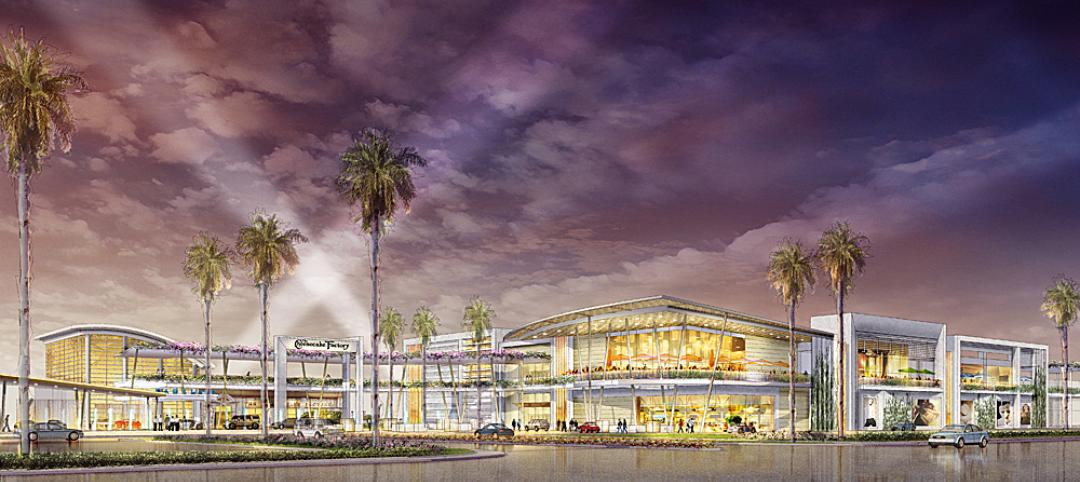When the Boston Watch Company opened its factory in 1854 on the banks of the Charles River in Waltham, Mass., the area was far enough away from the dust, dirt, and grime of Boston to safely assemble delicate watch parts. The factory’s production techniques were very advanced for the time, and business boomed.
In 1907 the company changed its name to the Waltham Watch Company, a name that became synonymous with precision movement and quality timepieces. Several of its watches reside in the Smithsonian Institution’s collection, including Model 1857, Serial No. 67613, a pocket watch gifted to President Abraham Lincoln to commemorate the Gettysburg Address.
As the brand grew in prominence, Waltham became known throughout the world as “Watch City.” Worker housing and supporting businesses sprang up around the factory, transforming the country town into an urban environment. Over the course of a century the factory grew to nearly 500,000 sf, making it one of the world’s largest brick buildings; its frontage along Crescent Street alone was a quarter mile in length.
Despite its massive size, the factory had exceptionally narrow floor plates, less than 25 feet wide from wall to wall in the work areas. The slender design and numerous oversized windows and skylights guaranteed that high levels of natural light flooded the workspaces and provided enough illumination for workers to manipulate tiny watch parts with precision—particularly important in those years before the factory was electrified.
Watchmaking at the factory was discontinued in 1957, but a number of tenants occupied parts of the building over the years, so it was never completely abandoned, nor was its Industrial Revolution architecture ever significantly altered.
That was good news for developer and new owner Berkeley Investments, which saw tremendous potential in the historic building with amazing river views and proximity to the Route 128 tech corridor and downtown Boston. The owner/developer assembled a Building Team that included Bruner/Cott & Associates (architect), Columbia Construction (GC), Epsilon Associates (historic consultant), and Pine & Swallow Associates (environmental consultant) to transform the property into a mixed-use complex with modern office space, retail, restaurants, and residential lofts.
The project was broken up into two phases: a 177,000-sf office component (phase one) and a retail/residential component (phase two, still under construction). The $25 million phase one rehab earned a Gold Award and praise from our judges. “Its reuse is to be celebrated,” said Reconstruction Awards judge Martha Bell, FAIA, LEED AP, principal at Tilton Kelly+Bell, Chicago.
Because the building was in decent shape, the Building Team was able to concentrate on reworking a 19th-century factory into a 21st-century office complex. The major focus: make the imposing structure more approachable and welcoming, create modern, user-friendly interior spaces, and provide a connection between the interior and the outdoors. The main entrances along Crescent Street were reconstructed, and a public exhibit space was installed in the lobby.
Additional access points open the building to the Riverwalk, a pedestrian walking/biking path along the Charles River developed in collaboration with the city’s Department of Conservation and Recreation, and to several courtyards within the complex. The landscaped courtyards serve as rain gardens to cool and clean the stormwater before it’s released into the river. Additional exterior work included brick repair and repointing, repairs to the slate roof, and stabilization of the central smokestack.
The factory’s interior was left largely intact, aside from the installation of the typical modern upgrades: HVAC, electrical, plumbing, telecom, life/safety, ADA compliance. Additional work focused on opening blocked freight passageways to improve interior circulation and views through the building, removing lead paint, and repairing exposed brick walls and timber ceilings. The window sashes, which had been replaced in the 1980s, were fitted with replicas of the originals. The window frames, however, remain original to the building. Thermal calculations and water-pressure testing proved the frames were still viable.
Almost three-quarters of the office space is leased, once again bringing jobs and activity to the South Side of Waltham. “They recreated the nerve center of the community,” said Reconstruction Awards judge David Callan, PE, SVP at Environmental Systems Design, Chicago. “The neighborhood surrounding it is there because of this factory, and bringing it back reenergizes the community.” BD+C
PROJECT SUMMARY
Building Team
Submitting firm: Bruner/Cott & Associates (architect)
Owner/developer: Berkeley Investments
Structural engineer: DM Berg Consultants
MEP engineer: Avid Engineers
GC: Columbia Construction
Historical consultant: Epsilon Associates
Environmental consultant: Pine and Swallow Associates
Landscape design: Richard Burch Associates
General Information
Size: 177,000 gsf
Construction cost: $25 million
Construction period: February 2008 to July 2009
Delivery method: Design-bid-build
Related Stories
| Jul 17, 2012
AIA and Architecture for Humanity select Disaster Response Grant recipients
Awards help each group implement their locally driven preparedness project in the second half of the year.
| Jul 17, 2012
KM/Plaza changes name to Plaza Construction
Lands new projects including the Perry South Beach Hotel and Dadeland Mall Kendall Wing Expansion.
| Jul 17, 2012
Dr. Phillips Charities Headquarters Building receives LEED Silver
The building incorporates sustainable design features, environmentally-friendly building products, energy efficient systems, and environmentally sensitive construction practices.
| Jul 16, 2012
BD+C Under 40 Leadership Summit scheduled
Attendee registration for U40 Summit II now open.
| Jul 16, 2012
Construction spending at 2 ½ year peak
Construction economist Ken Simonson says that four private nonresidential categories each posted 12-month spending increases of more than 25%: power and energy construction, 35%; hotels, 29%; educational and manufacturing, 27% apiece.
| Jul 16, 2012
Chen named design director at Heery
Chen comes to Heery from his own firm, Mark Chen Architect, a design and planning consulting firm, based in New York City, whose recent work includes large-scale planning studies for mixed-use projects.
| Jul 16, 2012
Reed Construction hires new project manager
Fread is a LEED AP and received his degree from Purdue University.
| Jul 16, 2012
Business school goes for maximum vision, transparency, and safety with fire rated glass
Architects were able to create a 2-hour exit enclosure/stairwell that provided vision and maximum fire safety using fire rated glazing that seamlessly matched the look of other non-rated glazing systems.
| Jul 12, 2012
New firm RSK Avanti Partners offers market development services
Full-service consulting firm is focused on working with product manufacturers, designers, specifies and contractors in the building construction market.
| Jul 12, 2012
Chicago Public Schools names Lend Lease team as construction manager
Under this Capital Improvement Program, the Lend Lease team will be responsible for renovation and life safety work at over 100 Chicago Public Schools across the City.

















